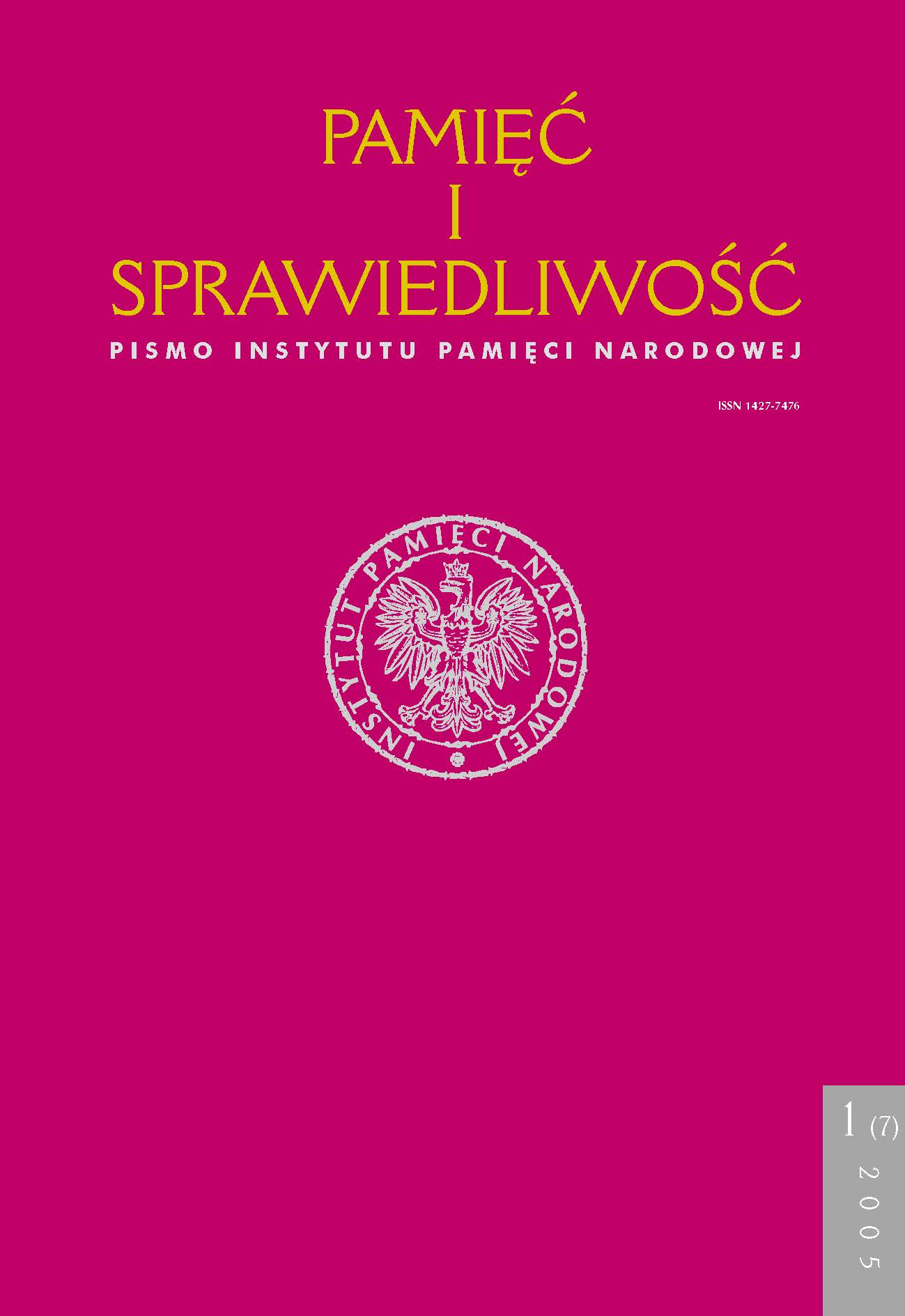„Na masowe budownictwo sakralne nie pójdziemy”. Ekipa Gierka wobec budowy katolickich świątyń (1970–1980)
Pamięć i Sprawiedliwość, Vol. 7 No 1 (2005), pages: 123-153
Publication date: 2005-06-30
Résumé
When Edward Gierek took over as the First Secretary of the Central Committee of the United Polish Workers’ Party (PZPR) once again the hopes of the Polish people for easing the Polish People’s Republic’s (PRL) antireligious programme rose, this includes the possibility of building places of worship. Unfortunately the hegemonic party, as a matter of principle, aimed to introduce atheism while slogans of normalising relations with the Catholic Church were a mere propaganda ruse. The policy of narrowing the legal activities involved in building places of worship was created by the central party structures (the
Administration Department of the United Polish Workers’ Party Central Committee – KC PZPR), administration (Office of Religious Beliefs) and police (Department IV of the Ministry of Internal Affairs) and their local government equivalents. In general all applications for building permits for religious and church buildings were turned down. Appeals from the bishops and believers came to no avail.
In this situation people tried to push their long-lasting efforts to get churches to a conclusion themselves. People from many housing estates, with tens of thousands of inhabitants, but without their own church as well as villages lying even over a dozen kilometres from their parish church, pressurised the State authorities. They were strongly backed by some of the Church leaders (especially by the Bishop of Przemyśl Ignacy Tokarczuk). Alongside legal initiatives (such as letters with thousands of signatures,
delegations to the high authorities) illegal activities began to spread. Existing accommodation was adapted for devotional practices or various buildings were built and then transformed. Spectacular scenes accompanied the building of these clandestine places of worship.
The fight with the so-called wild church building activities strongly engaged the Security Forces. In the “building files” there is information about the close observation of local communities, the intimidation of the most active people, the destruction of the
buildings, the brutal treatment of anyone who resisted. The determination of the Security Services and Citizen Militia officers in the ˚ywiec district (powiat) most probably led to the murder of a young man from Cisiec only because he was participating in the building of a church. Repressions were severe but of little effect. Till the end of the “Gierek decade” the policy was not changed. Over two hundred churches and a hundred chapels (especially
in central and southern Poland) were, mostly illegally, built, which was a drop in the ocean in relation to the needs.
Articles les plus lus par le même auteur ou la même autrice
- Ryszard Gryz, Pacyfikacje społecznych inicjatyw w zakresie budownictwa sakralnego na przykładzie Szklar w archidiecezji krakowskiej , Pamięć i Sprawiedliwość: Vol. 30 No 2 (2017)
 Język Polski
Język Polski
 English
English
 Deutsch
Deutsch
 Français (France)
Français (France)
 Italiano
Italiano
 Русский
Русский


 PDF (Język Polski)
PDF (Język Polski)
